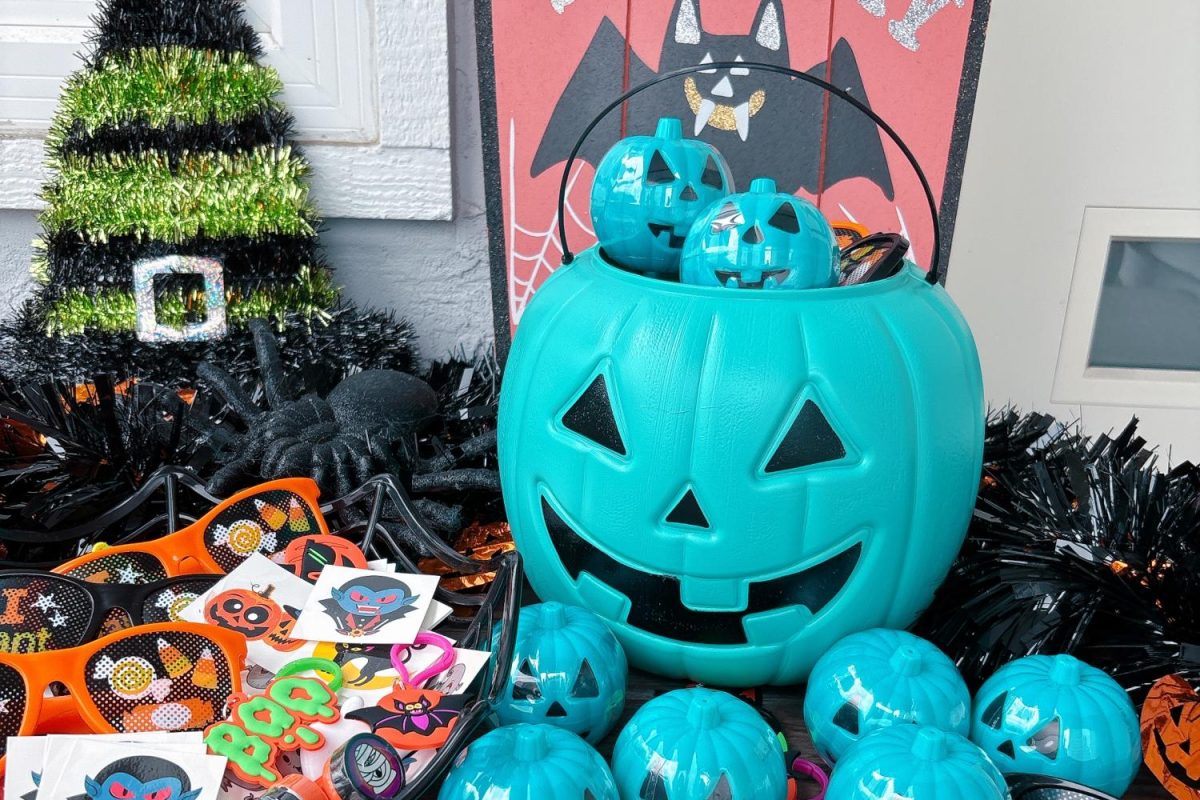
Emerson Koning
A house displays an arrangement of teal pumpkins on its front porch.The pumpkin was surrounded by non-food treats, already prepared for trick-or-treaters on Halloween.
As families join a growing movement to make trick-or-treating inclusive for kids with food allergies and restrictions, more porches glow teal in the weeks before Halloween.
The Teal Pumpkin Project began locally in Tennessee and was spread nationwide by the Food Allergy Research & Education (FARE) organization, encouraging neighborhoods to place a teal pumpkin in front of residences as a sign of non-food treats. Last year, over 12,500 locations participated in the project from every state and 13 other countries internationally.
“I noticed a lot of teal pumpkins in my neighborhood last year and am definitely expecting more this year,” Emma Levenson (10) said. “I think it’s great that people are becoming more inclusive to others who can’t have candy.”
Many Halloween candies contain common allergens like peanuts, dairy and gluten. For children with food allergies, this could be hazardous or add the stress of checking labels to a holiday tradition. More and more houses are adding toys and novelty items to their trick-or-treating bowls as candy alternatives.
“I noticed a lot of teal pumpkins in my neighborhood last year, and am definitely expecting more this year,” Torrey Pines student Emma Levenson (10) said. “I think it’s great that people are becoming more inclusive to others who can’t have candy.”
Levenson believes that Halloween can be an exciting experience even without candy.
“Candy shouldn’t be the main point of Halloween,” Levenson said. “It’s more about going out with your friends and having a fun time. Offering toys and games allows everyone to participate, not just those who are able to have candy. It takes away the focus of having the most candy to the shared experience of knocking on doors and dressing up.”
Levenson shared her thoughts about others she knew with food allergies.
“Lots of my friends have food allergies and are always checking labels,” Levenson said. “I feel like they would feel more comfortable if they saw alternatives to candy during Halloween and also wouldn’t feel left out.”
Another student at Torrey Pines, Chloe Qiu (10), offered her perspective on this project.
“Having a teal pumpkin at the front door during Halloween allows everyone to celebrate the holiday without having any restrictions,” Qiu said. “I think it shows inclusivity and compassion for others. Imagine not being able to eat candy and watching everyone else enjoy it, those people need something fun too.”
Catherine Bender, a parent in the community, shared her insight on this movement.
“My friend’s daughter, who has food allergies, told me about the teal pumpkin,” Bender said. “I purchased one for the first time last year and just bought another for this Halloween. As a parent, I understand how kids want to be included, so I do my part by handing out non-food items. When I did this last year, they were excited to see a change, and grabbed both toys and candy.”
Bender emphasized how this movement could become major in the future.
“Lots of other parents are becoming introduced to this idea and are starting to hand out other items alongside candy,” Bender said. “I think it’s important to raise awareness for food allergies. I believe this project will continue to grow each year.”